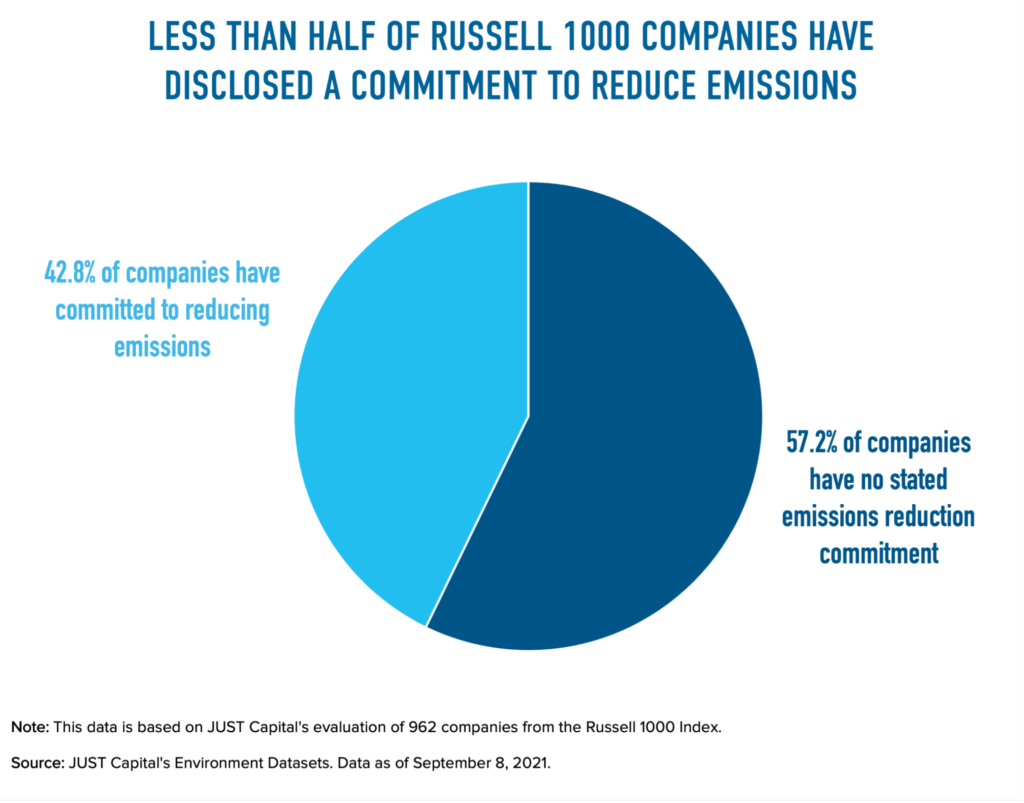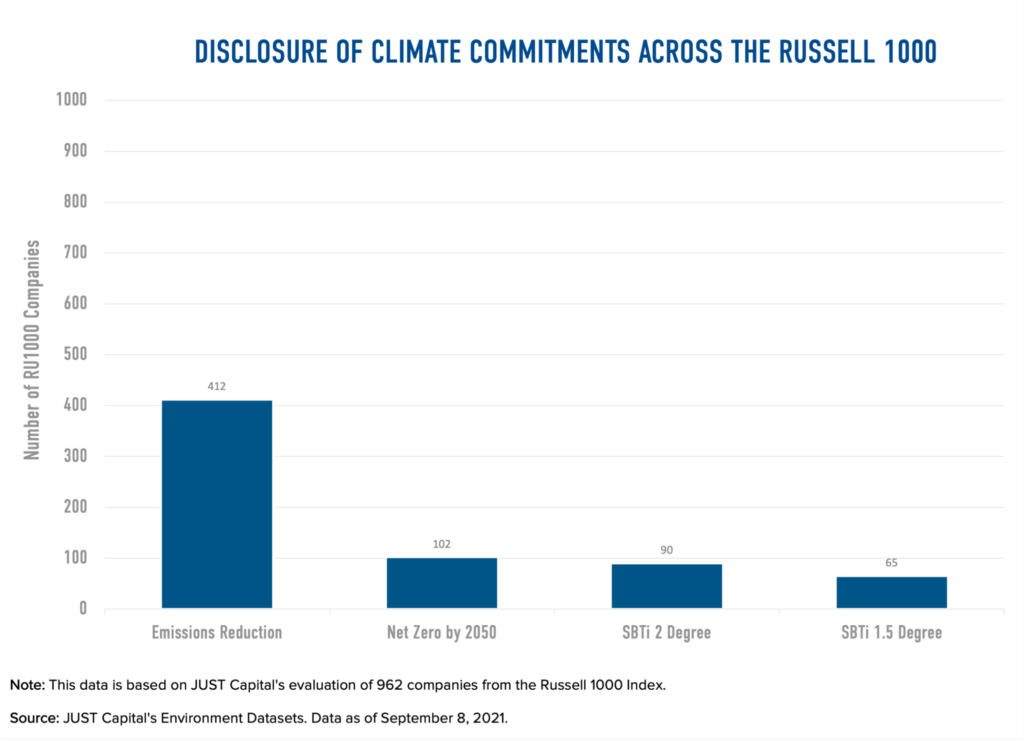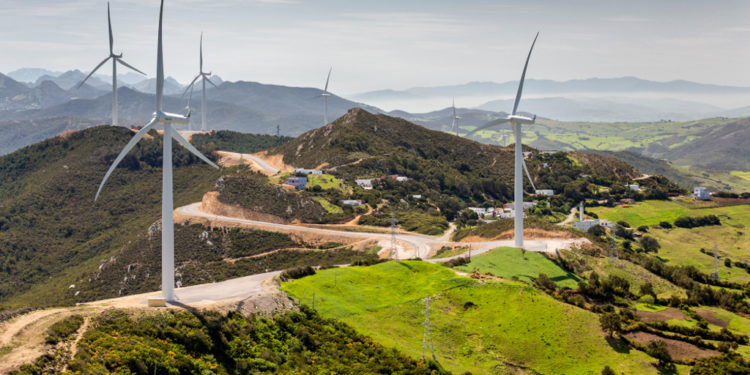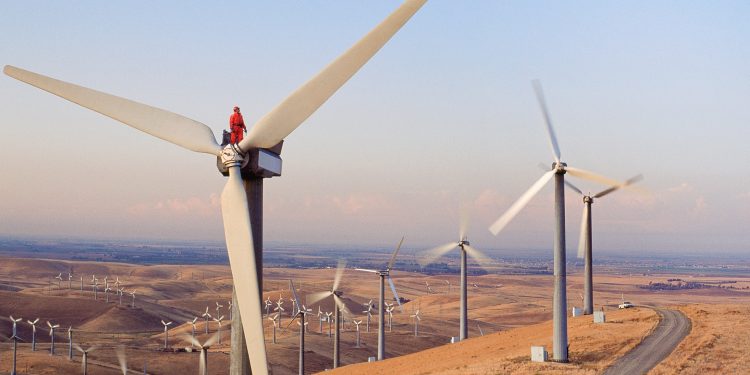More Corporate Climate Commitments Are Essential to Limiting the Effects of Global Warming
Climate news has grown more direct and more dire. The 2021 Intergovernmental Panel on Climate Change (IPCC) report’s harrowing language makes clear that humanity needs to take sweeping action now or risk the severe impacts of climate change. The United Nations Climate Change Conference (otherwise known as COP26) in Glasgow this November is expected to usher in much needed developments in the environmental space from the international community, but where does business fit into this need for immediate action?
The American public has also become increasingly invested in climate action. According to our recent survey conducted in partnership with the Harris Poll, 71% of respondents are concerned about climate change and 74% believe that companies committing to lowering their emissions will have a high/moderate impact on addressing global climate change.
In order to evaluate a company’s environmental efforts for our Rankings of America’s Most JUST Companies, JUST looks at four categories of climate commitments, listed by increasing rigor:
- Emissions Reduction Commitment – the broadest commitment, measuring whether companies state a numerical goal to reduce emissions anywhere within their value chain within a set timeframe.
- Net Zero by 2050 – evaluating whether companies have set a target to reach Net Zero emissions by 2050 at the latest.
- Science-Based Target Initiative (SBTi) for 2 Degree Scenario – assessing whether companies have set a science-based target that met SBTi’s standards to limit global warming to only 2 degrees above pre-industrial levels.
- SBTi for 1.5 Degree Scenario – the most rigorous commitment a company could make, measuring whether companies comply with the 1.5 Degree Scenario, a limited and often challenging pathway toward reaching the shared goal of limiting global warming to 1.5 degrees.

Looking closely at our data, we found that only 42.8% of Russell 1000 companies have disclosed a commitment to reducing emissions. In addition, only 10.6% of companies disclosed a Net Zero commitment by 2050, 9.3% set a commitment that met SBTi’s 2 Degree Scenario, and only 6.7% of company commitments met SBTi’s 1.5 Degree Scenario.

Looking at companies that disclose Net Zero commitments by industry, we found that the Utilities sector led with 16 out of 38 companies committing to Net Zero by 2050, while Health Care Providers lagged behind with zero commitments, the fewest out of all the industries we track and analyze.
However, all industries vary in regards to their emissions intensity, or the amount of emissions scaled by revenue. This calculation is done to control for the size of the company to increase comparability. By calculating overall emissions intensity, it becomes evident that the emissions intensity of the Utilities industry is over 200 times greater than that of the healthcare industry.

This trend can be seen throughout our dataset: industries with higher emission intensities had higher rates of Net Zero commitments. The top 100 polluters have a disclosure rate of 83%, compared to the 38% disclosure rate of the rest of the Russell 1000, indicating that top polluters are 2.17 times more likely to have an emissions reduction commitment. Looking at Net Zero commitments, the disclosure rate for the same 100 top polluters is 32%, which compared to 8% rate for the rest of the Russell 1000, makes them a little more than five times more likely to have a Net Zero commitment. There are exceptions to this, such as the Personal Products industry with 22% of its companies committing to Net Zero, despite having overall a very low emissions intensity. Of particular concern is the Oil and Gas industry, which has the highest emissions rate of any industry, but only 20% of companies making a Net Zero Commitment.
The fact that top-polluting companies are more likely to commit to Net Zero emissions is encouraging, as we will need major action from the private sector to limit warming. However, we also see a correlation between the size of a company and how likely it is to disclose environmental commitments. The top 100 largest companies we rank have a Net Zero disclosure rate of 37%, which is about five times larger than the rest of the Russell 1000 (7.5%). Bigger companies inherently have more resources and avenues to set these commitments, a trend we see with ESG disclosure. But these large companies are the ones under greater pressure from stakeholders to prioritize the environment – a great example is Engine No. 1’s proxy battle with Exxon.
While we can hope these companies are setting meaningful goals and will stick to their commitments, reassurance is hard to come by. The leadership in companies will likely experience turnover by the year 2050, the finish line of a lot of climate commitments and the last-possible year to meaningfully reduce emissions to reduce warming. That’s why intermittent targets (5, 10, 15 years out) are necessary for stakeholders to adequately assess the progress of these commitments and to ensure that companies achieve these goals. This increased transparency, accompanied by standardized language, will be key to ensuring the private sector is held accountable for in the fight against climate change.
Note: This data is based on JUST Capital’s evaluation of 962 companies from the Russell 1000 Index. We collected emissions and climate commitment data from public company filings, and the data is updated as of September 8, 2021.






